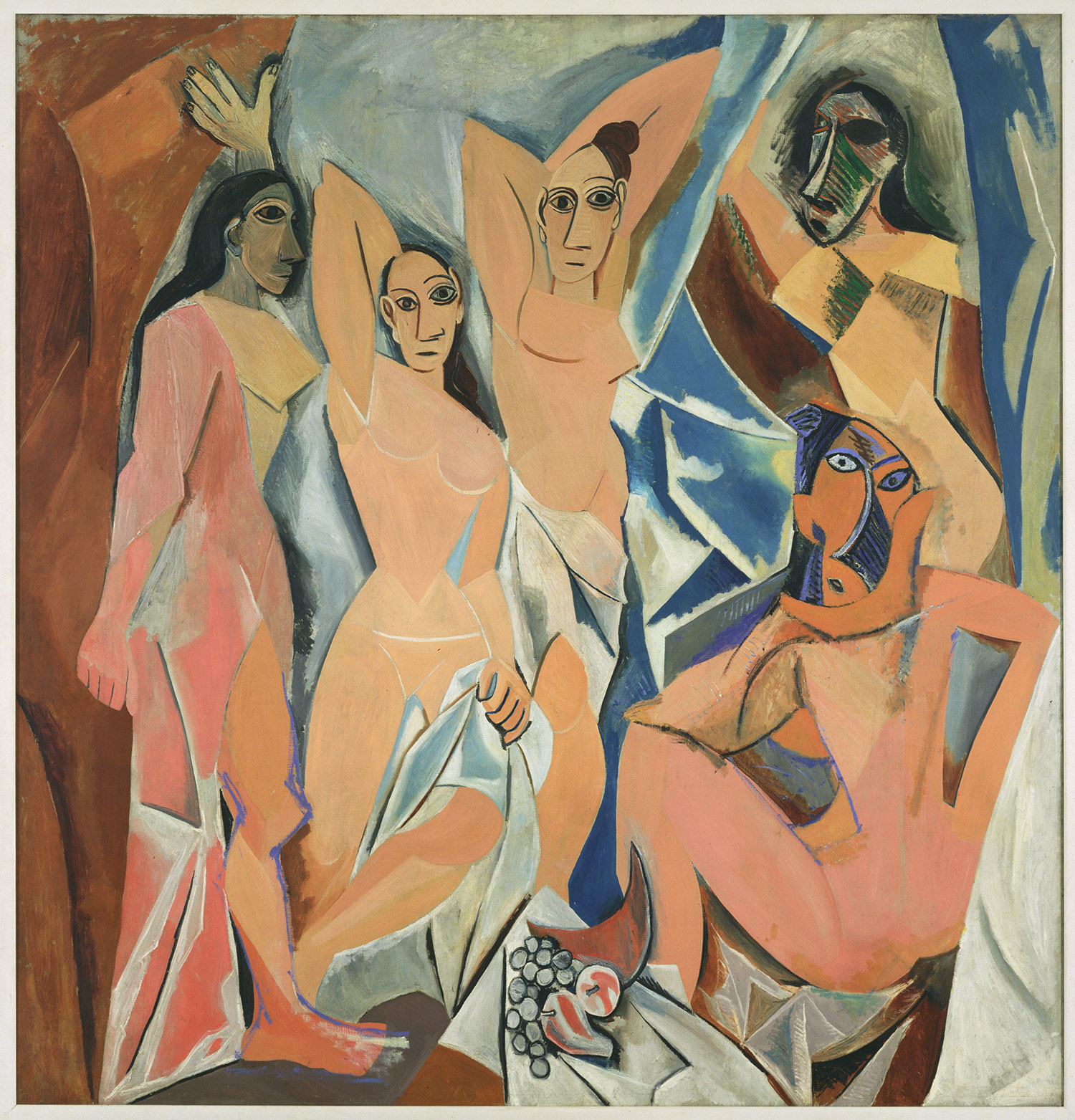
Document the Source Most writing styles require certain information for citing Web sites. When keeping notes write the URL, the date you accessed and the description of the site. If the URL changes you may need to search for it later.
Evaluate the Web site Don't believe everything you read!
Google Scholar If you need to use the Internet for research use limits under <More> on Google home page or try the Google Scholar link in the box on this page.
Domain searches on Google: type after your search term <site:edu> to retrieve education sites. The same thing would apply for government sites <site:gov>
Web search engines Not all search engines (Google, Yahoo!, Bing, Ask.com, etc.) are the same. Each has strengths and weaknesses. Search engines do not search all of the Internet.
Wikipedia is not a scholarly Web site but it may be a starting point for definitions or to help identify names when you haven't a clue where to begin.

Les Demoiselles d'Avignon, 1907
Pablo Picasso (Spanish, 1881–1973)
Oil on canvas; 96 x 92 in. (243.8 x 233.7 cm)
The Museum of Modern Art, New York (acquired through the Lillie P. Bliss Bequest)
Digital Image Copyright The Museum of Modern Art/Licensed by SCALA/ Art Resource, NY
Museum of Modern Art, New York
Although still a transitional work, this large painting may be called the first Cubist picture. Its combined influences are manifold, ranging from El Greco, the bathers of Cézanne, and Iberian and African art that Picasso had recently seen at the ethnographic museum in Paris. Picasso made innumerable preparatory studies for this work. The title, given years later by a friend of Picasso, is an ironic reference to a cabaret or maison publique on the Carrer d'Avinyó (Avignon Street) in Barcelona. The dynamic power of this work, its expressionistic violence and the barbaric intensity of the five women, especially the two on the right, was unsurpassed in European art at that time. The picture remained with Picasso until 1920, when it passed into the collection of the famous couturier Jacques Doucet. While in Picasso's studio and seen by other artists, the work acquired a legendary reputation.
Murrell, Denise. "African Influences in Modern Art". In Heilbrunn Timeline of Art History. New York: The Metropolitan Museum of Art, 2000–. http://www.metmuseum.org/toah/hd/aima/hd_aima.htm
(April 2008)